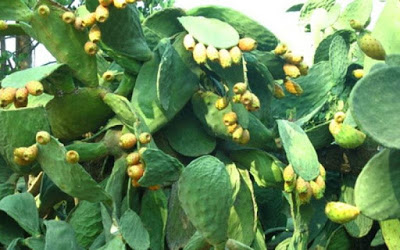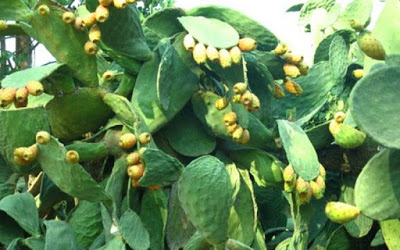The emergence of an insect that infects prickly pears (better known as prickly pears), sucking the juice from their leaves and leading them to a few weeks in full, is of great concern to the rural world of Famagusta province, mainly, and to Larnaca secondarily. .
The director of the Department of Agriculture, Androula Georgiou, confirmed the problem, noting that the first reports from farmers were initially made in Kokkinochoria last September and October, which signaled an alarm to her Service. In the process, he added, more limited reports were made by some farmers in areas of Larnaca, which are adjacent to Kokkinochoria.
The problem, he stressed, seems to be limited to these two provinces for the time being and the primary goal of the Ministry of Agriculture is to fight the insect with sprays, before the phenomenon reaches pan-Cypriot proportions. "Indeed, infestations by the insect Dactylopius opuntiae have been identified on prickly pears (shoal figs) in the province of Famagusta.
This insect belongs to the pseudococcus and is called Dactylopius opuntiae. It infects exclusively plants of the cactus family with a particular preference for prickly pears and other cacti of the genus Opuntia ", said Ms. Georgiou and mentioned as the entrance gate of the insect in Kokkinochoria, the dead zone and the occupied areas
He added that the insect has the general characteristics of common pseudococci that infect plants and trees. It has an oval to round shape and is covered by a white waxy substance, commonly known as "cotton". Characteristic of the insect is the intense red color that bears the body of adult females and juvenile stages (larvae) of the insect.
The insect has many generations, the year and the duration of its biological cycle as well as the number of generations depend on the prevailing weather conditions. It lays a large number of red eggs in the cotton it creates. Creeping larvae hatch from eggs and move to all parts of the plant.
Wind and human activities (eg crop care, marketing of infected fruits) contribute significantly to the movement and spread of the insect in new trees and areas, while it can also be transmitted through animals or birds.
The Department of Agriculture encourages growers to contact the local Agricultural Offices in case of suspicion or location of the insect in prickly pears.
Sprays were done, others follow in March
The director of the Department of Agriculture also mentioned that the first intensive spraying in affected areas is in progress, but unfortunately it was stopped due to the rains lately. They will resume as soon as possible, while new sprays will take place in March, with the Department of Agriculture hoping that the results of its efforts will be positive. All shoemaker growers have also been informed about this.
Source: Liberal

